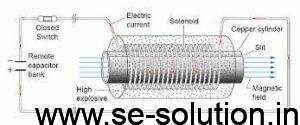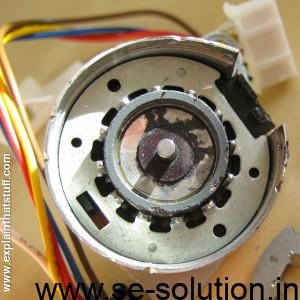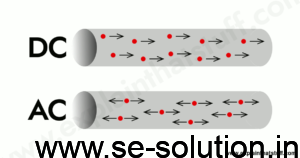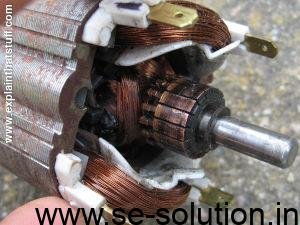**Introduction of how does a motor work ?**
Numerous machines and devices we use every day are powered by motors, which are crucial components. The importance of motors in contemporary life is enormous, ranging from supplying energy to machines used in industry to operating the laptop fans. Have you ever thought about how these electromechanical marvels operate, though? We shall cover the fundamentals of motor operating as we dig into the intriguing realm of motors in this post.
1. Understanding the Fundamentals

A motor is fundamentally a device that transforms electrical energy into mechanical energy, allowing a shaft or rotor to move. Electromagnetism is the fundamental concept that underlies the operation of the majority of motors. In this process, there are two main parts: the rotor, which rotates, and the stator, which is stationary.
Electromagnets are found in the stator, whereas permanent magnets or electromagnets may be found in the rotor.
2. The Power of Electromagnets

Motors require the use of electromagnets. By running an electric current through a coil of wire, which produces a magnetic field, they are made. The rotor’s magnetic field interacts with the permanent magnet’s or another electromagnet’s field to produce a force that causes the rotor to begin rotating.
3. The Function of Brushes and Commutators

Commutators and brushes are essential components in some motors, such as DC (Direct Current) motors, for ensuring rotation. The split-ring commutator joins the external circuit to the revolving coil (armature).
Brushes are conductive parts that come into touch with the commutator, allowing current to flow into the coil and reversing the direction of the current every half-rotation to maintain rotation.
4. AC vs. DC Motors,

Based on the type of current they utilise, motors can be divided into two primary categories: AC motors and DC motors. Our houses and places of work are powered by alternating current, which is meant to run on a continual change in direction. DC motors, on the other hand, run on fixed-polarity direct current. Due to the accessibility of AC power, AC motors are more common, although DC motors have a place in a number of applications where precise control is necessary.
5. Synchronous Motors’ Magical Synchronization

Synchronous motors are an exclusive class of AC motors distinguished by their exact rotational control. They maintain synchronization with the power supply’s frequency while running at a set pace. They are ideal for applications like clocks and timers thanks to this distinctive feature.
6. induction Motors: Providing the World with Energy

Another prevalent form of AC motor used in everything from domestic gadgets to industrial gear are induction motors. Induction motors do not use brushes or commutators, in contrast to synchronous motors. Instead, they employ electromagnetic induction to create a rotating magnetic field in the rotor, which forces it to follow the revolving field of the stator and start motion.
7. Efficiency and advancements rank seventh.

Motor technology has advanced tremendously over time to improve performance and efficiency. Scientists and engineers are constantly looking for new, creative ways to increase power output, decrease energy losses, and create smaller, lighter motors. For instance, brushless DC motors have grown in popularity because of their increased efficiency and less maintenance requirements.
**Conclusion**
Amazing machines called motors are the foundation of contemporary technology. Motors work diligently behind the scenes in everything from the electric cars that move us forward to the gadgets that make our lives easier. We get insight into the underlying workings of these engineering marvels by grasping the concepts of electromagnetism, commutation, and induction. humans may anticipate that motor efficiency will increase as technology develops, significantly influencing how humans interact with the outside world. So, the next time you switch something on or turn it on, stop to appreciate the motor’s electromechanical magic for bringing it to life.
FOR MORE ELECTRICAL KNOWLEDGE PLEASE VISIT TO OUR YOUTUBE CHANNEL SE SOLUTION BY YOUR SUPPORT WE REACHED 4 LAKH+ SUBSCRIBERS

AND FOR MORE WINDING DATA YOU CAN SEARCH IT HERE ON OUR WEBSITE
I HOPE YOU LIKED THE WEBSITE

